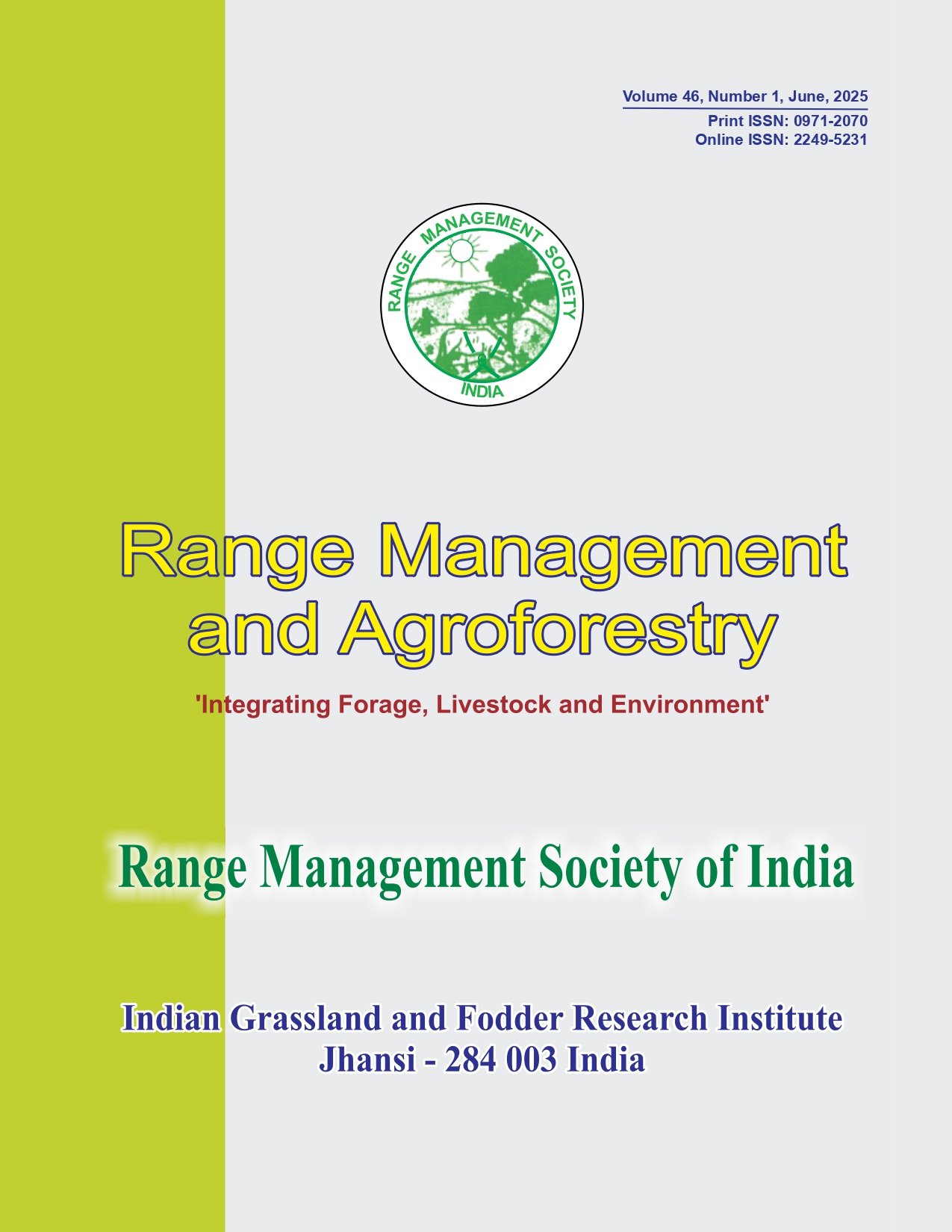Microbial biomass and enzyme activity in relation to shifting cultivation and horticultural practices in humid subtropical North-Eastern India
Keywords:
Dehydrogenase, Fluorescein diacetate, Human activities, Land-use, Microbial biomass, Soil propertiesAbstract
The present study conducted in the Bhandari or lower range of Wokha district of Nagaland in north-eastern India aimed at analyzing the impact of human activities such as shifting agriculture (‘Jhum’) and horticultural practices on microbial biomass and Fluorescein diacetate hydrolysis (FDA) and dehydrogenase (DHA) activities in soil. Microbial biomass carbon (MBC) and nitrogen (MBN) as well as FDA and DHA activities were significantly greater in the soils of the undisturbed forest than the soils under various land-use practices. The MBC and MBN in the surface soil layer (0–25 cm) were highest (99.0 and 20.43 mg kg–1 , respectively) in the forest and lowest (21.89 and 6.25 mg kg–1 , respectively) in the 1year old jhum fallow, which was subjected to intense human activities. Similarly, FDA (1.33 mg fluorescein h-1 kg-1 ) and DHA (80.62 mg TPF 24 h-1 kg-1 ) were highest in the forest and lowest (0.67 mg fluorescein h-1 kg-1 and 41.55 mg TPF 24 h-1 kg-1 , respectively) in the 1 year old jhum fallow. Thus, human activities in the forest ecosystem were responsible for significant reduction in both microbial biomass and enzyme activities. Both these properties showed recovery during regrowth of vegetation on jhum fallows. Microbial biomass and enzyme activities declined with increasing soil depth in all the land-use. Pearson’s correlation matrix revealed strongly significant positive correlation of microbial biomass and enzyme activities with selected soil properties. A highly significant positive relation between MBC and MBN was also observed.




